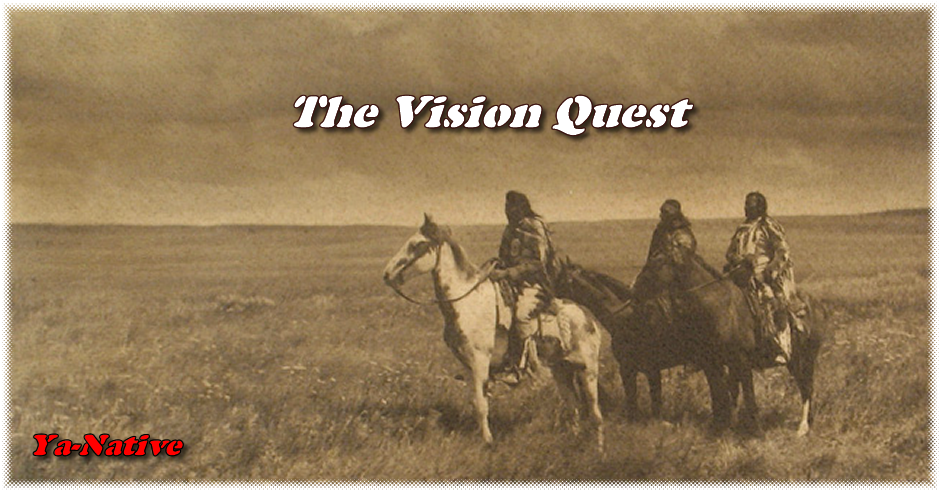
Visions, both those in dreams and those experienced in a
semiwakeful state, played an important role in the religious
and spiritual life of Indians all over North America.
Visions were thought to have significance for
individuals and for the entire tribe. Native peoples
thought that through them, people could come in contact
with the spirit world and receive power, or “medicine.”
The quest for visions usually occurred around
some important event, such as passage from boyhood into manhood or preparation for war. There were various
ceremonies and means to induce them. Some involved
the use of hallucinogenic plants, such as peyote or jimsonweed.
The striving for visions among Plains peoples
is usually referred to as the Vision Quest.
In order to achieve visions, a Plains Indian normally
first purified himself with a sweat bath in a sweat lodge,
stripped himself naked, painted himself with white clay,
went off to an isolated place, and fasted for days. If
hunger, thirst, and exposure to the elements alone failed
to bring on a trancelike experience and resulting visions,
the individual sometimes further tortured himself by
cutting off a finger or by some other self-mutilation.
The vision usually came in the form of an animal. But
it could relate to a plant, place, object, ancestor, or some
natural phenomenon, such as a storm. After the experience,
a shaman would help the individual interpret the
vision. What was seen in the vision would henceforth
symbolize the individual’s guardian spirit. The individual
would prepare a medicine bundle with sacred objects
somehow relating to his vision.